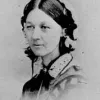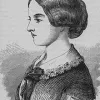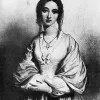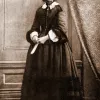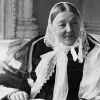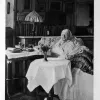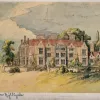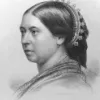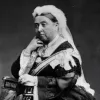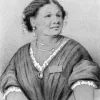Important update from TheSchoolRun
For the past 13 years, TheSchoolRun has been run by a small team of mums working from home, dedicated to providing quality educational resources to primary school parents. Unfortunately, rising supplier costs and falling revenue have made it impossible for us to continue operating, and we’ve had to make the difficult decision to close. The good news: We’ve arranged for another educational provider to take over many of our resources. These will be hosted on a new portal, where the content will be updated and expanded to support your child’s learning.
What this means for subscribers:
- Your subscription is still active, and for now, you can keep using the website as normal — just log in with your usual details to access all our articles and resources*.
- In a few months, all resources will move to the new portal. You’ll continue to have access there until your subscription ends. We’ll send you full details nearer the time.
- As a thank you for your support, we’ll also be sending you 16 primary school eBooks (worth £108.84) to download and keep.
A few changes to be aware of:
- The Learning Journey weekly email has ended, but your child’s plan will still be updated on your dashboard each Monday. Just log in to see the recommended worksheets.
- The 11+ weekly emails have now ended. We sent you all the remaining emails in the series at the end of March — please check your inbox (and spam folder) if you haven’t seen them. You can also follow the full programme here: 11+ Learning Journey.
If you have any questions, please contact us at [email protected]. Thank you for being part of our journey it’s been a privilege to support your family’s learning.
*If you need to reset your password, it will still work as usual. Please check your spam folder if the reset email doesn’t appear in your inbox.
Florence Nightingale
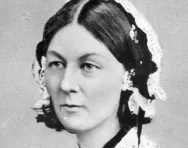
Why is Florence Nightingale famous?
Florence Nightingale is a famous British nurse who lived from 1820-1910. She helped to make hospitals more sanitary places and wrote books about how to be a good nurse.
Much of what we know about clean, organised hospital conditions today is thanks to Florence’s hard work and research. She began her nursing career during the Crimean War and campaigned for better hospital conditions for the wounded soldiers there.
She is considered the founder of modern nursing.
Top 10 facts
- She was born in Florence, Italy, which is how she got her name!
- At first her family didn’t want her to become a nurse because they didn’t think it was a very nice job to have but Florence was very determined and eventually got their consent.
- Florence helped to treat wounded soldiers during the Crimean War, and made sure the hospital was clean. The soldiers were very grateful for Florence’s kindness.
- During the Crimean War, she was nicknamed ‘The Lady with the Lamp’ because she would work all night to make sure the soldiers had what they needed, like water and warm blankets.
- In 1883 Florence met Queen Victoria, who awarded her the Royal Red Cross medal to thank her for all of her hard work as a military nurse.
- In 1860, she set up the Nightingale Training School at St. Thomas' Hospital in London.
- Florence was a talented mathematician who proved, using statistics, that keeping hospitals clean has a very beneficial effect on patients' recovery rates. She was the first woman to be elected to the Royal Statistical Society.
- International Nurses Day is celebrated every year on 12 May, Florence Nightingale’s birthday.
- Thanks to Florence's work and achievements, people's view of nursing was transformed and it became a respectable profession for women.
- The International Red Cross (which was founded thanks to her work) awards the Florence Nightingale Medal to nurses who have given exceptional care to people who are sick and wounded, in war or peace.
- 12 May 1820Born in Florence, Italy
- 7 February 1837Dreamt that God told her she had a great mission in life, which led her to think about becoming a nurse
- 1844Announced her decision to train for nursing
- 1851Studied nursing at the Institute of Protestant Deaconesses in Kaiserwerth, Germany
- 22 August 1853Became superintendent at the Institute for the Care of Sick Gentlewomen, in London
- 1853-1856The Crimean War: Russia v. UK, France, Sardinia and the Ottomon Empire about owning territories in the Ottomon Empire
- 21 October 1854Left for the main British camp in the Crimea, along with 38 volunteer nurses trained by Florence
- 4 November 1854Arrived at the Selimiye Barracks in Scutari in Turkey
- May 1855Became very ill with Crimean fever, a chronic disease
- 16 March 1856Became general superintendent of the Female Nursing Establishment of the Military Hospitals of the Army

- August 1956Returned to England from Crimea
- September 1856Visited Queen Victoria and Prince Albert to tell them about the poor conditions of military hospitals and asked that a Royal Commission investigate the health of the British Army
- 1858Published Notes on Matters affecting the Health, Efficiency and Hospital Administration of the British Army
- 1858-59Worked to establish a Royal Commission to investigate health conditions in India
- 1859Published Suggestions for Thought to Searchers after Religious Truths
- 1859Published Notes on Nursing: What it is and What it is Not
- 1859Became a member of the Royal Statistical Society
- 9 July 1860Opened the Nightingale Training School at St. Thomas' Hospital
- 1861Opened the School of Midwifery Nursing at King’s College Hospital
- 1868Opening of The East London Nursing Society
- 1874Opening of the Workhouse Nursing Association and National Society for Providing Trained Nurses for the Poor
- 1883Awarded the Royal Red Cross by Queen Victoria
- 1890Opening of the Queen's Jubilee Nursing Institute
- 1901Became completely blind
- 1904Appointed a Lady of Grace of the Order of St John
- 1907Awarded the Order of Merit
- 1908Given the Honorary Freedom of the City of London
- 1910Awarded the Badge of Honour by the Norwegian Red Cross Society
- 13 August 1910Died in London, UK


Boost Your Child's Learning Today!
- Get a tailored learning plan for your child
- Complete the activities added each week
- Watch your child's confidence grow!
Did you know?
- Florence was named for the city where she was born – Florence, Italy
- She had just one sibling – an older sister named Frances Parenthope
- Florence Nightingale’s very first patient was a dog! She nursed Cap the sheepdog back to health after his leg was badly bruised, much to the thanks and appreciation of his owner, Roger.
- Before Florence left for Turkey, she had a baby pet owl called Athena who she’d carry in her pocket.
- The soldiers Florence nursed at the hospital in Scutari had a pet tortoise named Jimmy.
- Florence didn’t like having her picture taken or painted, so there aren’t many photos or paintings of her around today.
- The nursing school Florence set up is now called the Florence Nightingale School of Nursing and Midwifery, and it is part of King's College London.
- Florence is credited with inventing the pie chart!
- Florence published books, reports and leaflets about hospital planning and organisation. Her most famous work was Notes on Nursing: What It Is and What It Is Not.
- American poet Henry Wadsworth Longfellow wrote a poem about Florence called Santa Filomena.
- Florence mentored Linda Richards, who is the first professionally trained nurse in the United States of America.
- 12 May, Florence's birthday, isn't only International Nurses Day; it is also International Chronic Fatigue Syndrome Awareness Day as some people think she may have had the disease herself.
Florence Nightingale gallery:
- Florence Nightingale
- Portrait of Florence as a young adult
- Portrait of young Florence
- Florence Nightingale around 1858
- Picture of Florence later in life
- Florence as an elderly woman (Credit: Wellcome Collection CC BY 4.0)
- Florence’s childhood home, Embley Park in Hampshire
Gallery
About
Florence grew up in Hampshire, and was educated by her father who taught her things most girls wouldn’t have learned at that time such as Latin, maths, philosophy and history.
Florence went against her family’s wishes when she announced her plans to become a nurse – they didn’t think it was a proper job for someone as wealthy and well-educated as Florence. It took Florence seven years of asking for her father’s permission to study nursing before he finally gave it to her. Florence studied nursing at the Institute of Protestant Deaconesses in Kaiserwerth, Germany.
Florence worked as a nurse in a hospital in Scutari, Turkey during the Crimean War, where she discovered that soldiers were dying because of lack of proper food and medicine, shortage of staff and dirty conditions. She got her famous nickname, ‘The Lady with the Lamp’, after a news article in The Times described her care and attention to the wounded soldiers in Scutari – she kept working even after everyone else had gone to sleep.
Florence told the British government how poor conditions were for soldiers in hospital, and they had famous engineer Isambard Kingdom Brunel design a hospital that could be taken apart and shipped overseas.
Florence wrote more than 200 books, reports and pamphlets about how hospitals should be arranged and run, including Notes on Nursing: What it is and What it is Not, a book explaining basic nursing skills such as hygiene, nutrition and how to set up a sickroom; it was used to teach nurses at Florence’s nursing school.
Florence suffered from illnesses that often kept her in bed for nearly half of her life, and she became permanently blind in 1901.
Florence was very good at maths, and was the first woman to become a member of the Royal Statistical Society. She was also the first woman to be given the Order of Merit.
The Florence Nightingale Medal was established by the International Red Cross in 1912 – two years after Florence’s death – and seen as the highest honour a nurse or nursing aide can achieve.
Florence’s work reached far beyond the shores of England. She helped to improve medical care in India by working to establish a public health service.
Famous friends
Sidney Herbert (1810-1861), a British politician who sent Florence to work in Scutari, helped her lead the effort to improve army health, and helped her set up the Nightingale Fund to train other nurses.
Linda Richards (1841-1930), the first professionally trained nurse in America, who was mentored by Florence when visiting London for a seven-month training course; she founded nursing training schools across America, and helped launch Japan’s first training programme for nurses.
Elizabeth Blackwell (1821-1910), the first woman to qualify as a doctor in America, who encouraged Florence to keep trying to convince her family that she should study nursing.
Related Videos
Just for fun...
- See a picture of Scutari hospital, read a newspaper report about it and imagine being there with Florence Nightingale activities from the National Archives
- Print out a story about Florence Nightingale and an activity sheet about it, from the British Council
- Hear Florence Nightingale sing her story in a Horrible Histories song
- Florence Nightingale crosswords and wordsearches
- Take the CBBC Formidable Florence Nightingale Quiz
Children's books about Florence Nightingale
Find out more about Florence Nightingale:
- Watch a BBC Bitesize video in which an actress playing the part of Florence Nightingale tells the story of her life and work
- A KS1 BBC Bitesize animation about Florence Nightingale
- A National Geographic Kids guide to the Lady with the Lamp
- A detailed biography of Florence Nightingale from the Florence Nightingale Museum
- See a September 1860 letter which Florence Nightingale wrote describing the benefits of clean air
- Florence Nightingale timeline
- Read all about The Crimean War
- Florence Nightingale facts and pictures from Kiddle Encyclopedia
- See illustrations of Florence's work during the Crimean War
- Information about Wales' most famous nurse, Betsi Cadwaladr, a contemporary of Florence Nightingale who also worked during the Crimean War
- Find out about the interactions between Florence Nightingale and Queen Victoria
See for yourself
- Lots of pictures of Florence Nightingale are in the National Portrait Gallery
- The Florence Nightingale Museum collection is made up of almost 3000 artefacts including Athena, Florence's pet owl. Look at the objects yourself online
- See objects related to Florence Nightingale which are exhibited at the National Army Museum, including her medals
- Florence buried in the graveyard at St. Margaret Church in East Wellow, Hampshire.
- There is a statue of Florence Nightingale in Waterloo Place in London, and three statues of her in Derby
- Florence is pictured in a stained glass window in the Derbyshire Royal Infirmary Chapel
- The Florence Nightingale Museum is located in St Thomas' Hospital in London, where you can even see the lantern that gave her the famous nickname!
- Visit the National Army Museum in London and follow a Florence Nightingale and Mary Seacole gallery trail to find out about soldiers' lives during the Crimean War
